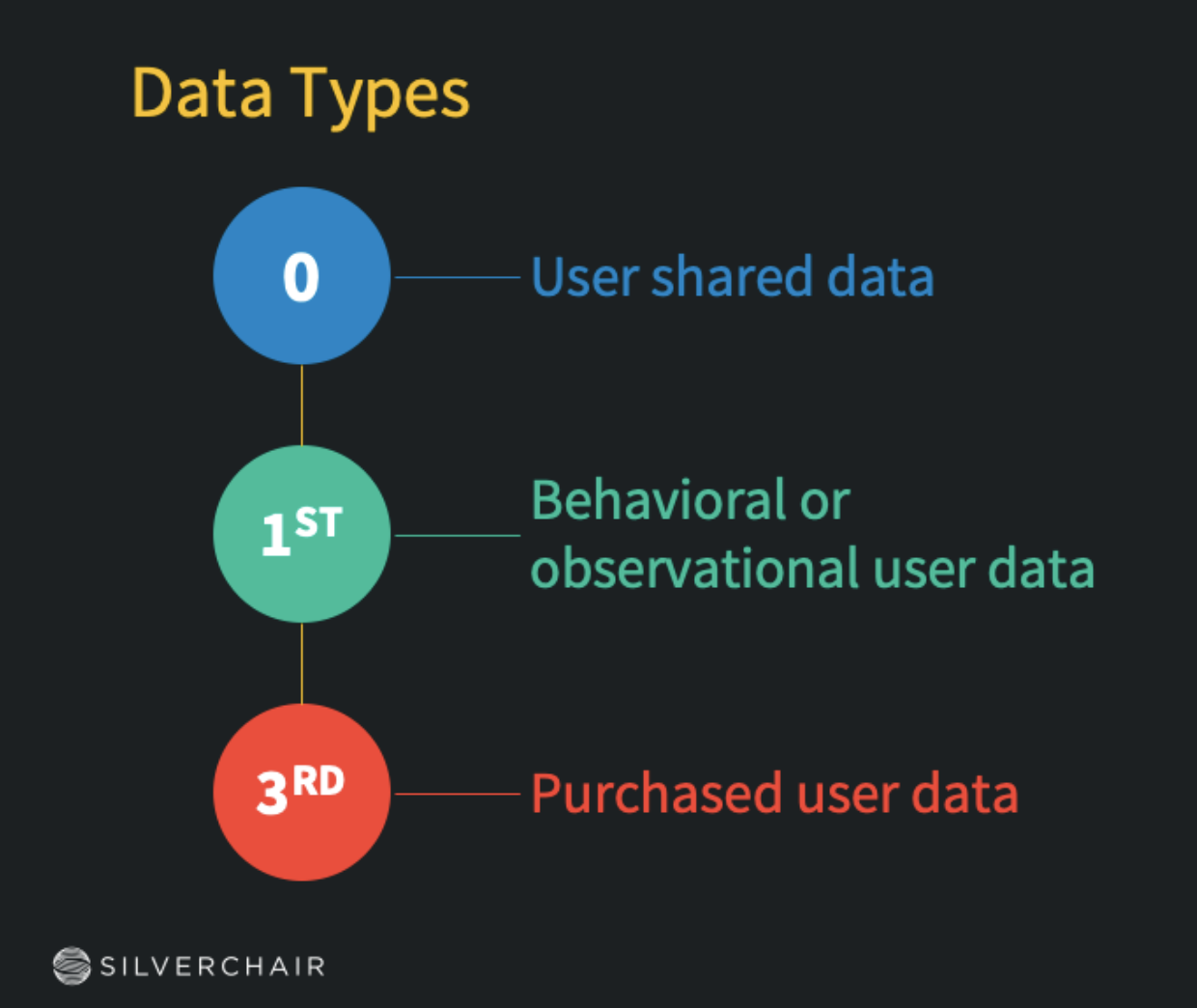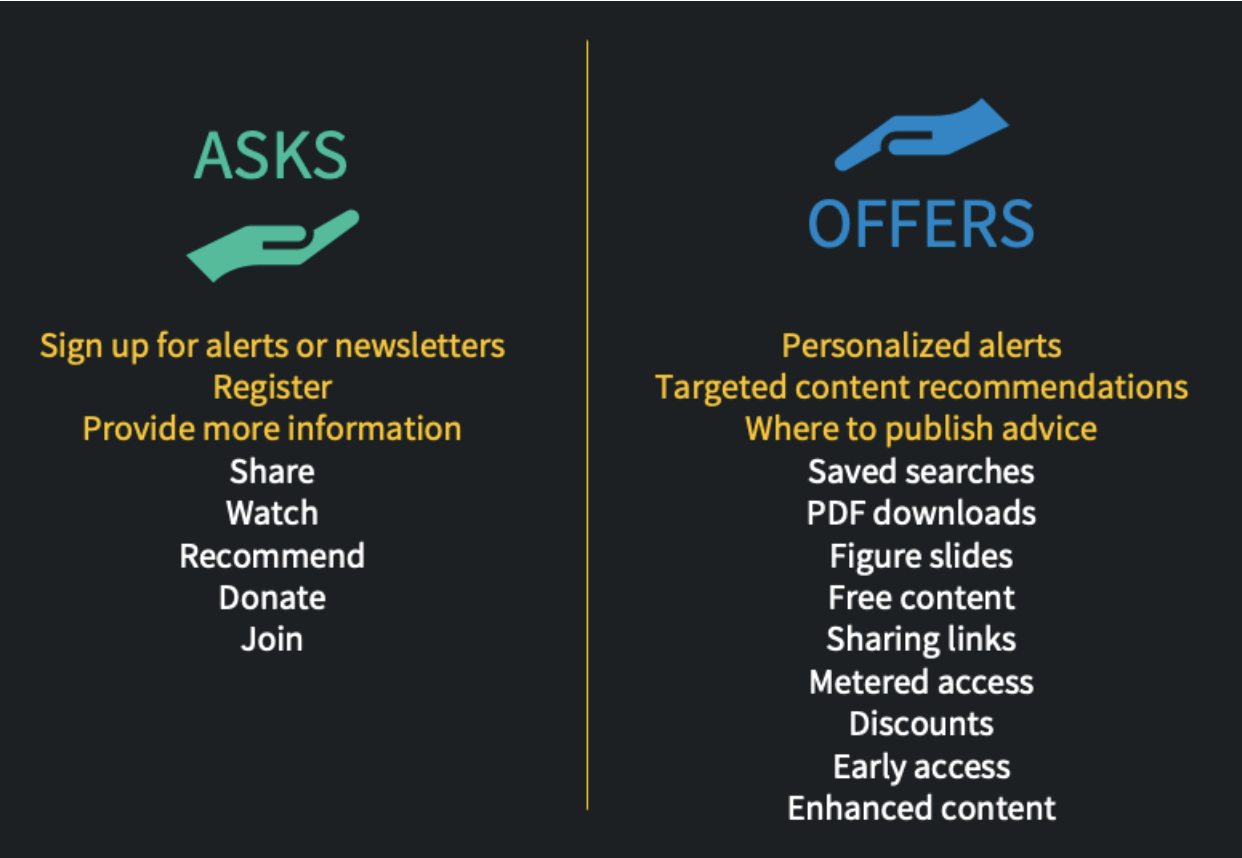The Role of Zero- and First-Party Data in Personalization
As publishers strive to compete for users with the ever-growing torrent of content available online, it has become increasingly important to know your users and to personalize their experiences. In a recent article in The Scholarly Kitchen, Roger Schonfeld and Dylan Ruediger looked at the growing mismatch between the intended audience of scholarly content and the actual readership: “This shift, which has been building over time, is insufficiently considered by editors or publishers in their editorial practices or product strategy.” Some publishers are indeed considering this shift, however, as seen in the 2023 Publishing Technology Trends report:
- “We need to move outside of what we have always done and think about partnerships that make us understand and target our audiences better.” —Stacey Burke, Publications Director, American Physiological Association
- “Mass market channels that don't surface scholarly content won't cut it. We’ll see publishers apply scholarly apparatus to a broader array of content types. Improved recommendations & user targeting.” —Jessica Lawrence-Hurt, Marketing & Publishing consultant
- “A lot of publishers have Google Analytics; a lot of publishers have straightforward advertising alerts and email marketing tools; but very few have a sophisticated understanding of the users, purchasers, their journeys or personas to pull together a robust digital strategy.” –Will Schweitzer, President, Silverchair
The rise of Open Access and other changes have meant that publishers need to shift from a B2B (business-to-business) perspective, where libraries are the ultimate customer, to a B2C (business-to-consumer) one, where authors and readers are increasingly important, making the user experience of those users a crucial consideration.
Or, as Laura Simis of Hum put it:
“As publishers recognize the need to adapt to the changing needs and preferences of their audience, they’re looking to become more audience-led, data-driven, and community-focused in their approach, as well as providing comprehensive tools and resources to support readers and authors throughout the publication process.”
Fortunately, publishers in our industry are in the extraordinary position of publishing incredibly useful content and having highly trusted brands. This value, combined with analytic tools that give us a far richer understanding of our users and how they interact with our content, means that publishers can now make less intrusive asks of our users while continuing to enhance their on-site experiences. Many publishers are now supercharging the user experience, content discoverability, sales, marketing, and decision-making using Zero- & First-Party Affinities.
ZERO- AND FIRST-PARTY AFFINITIES
On most scholarly content hosting platforms, zero- and first-party data is used for on-site personalization or content recommendations, to improve search results, or to send custom alerts or emails. User affinity services proactively capture user interests and passively collect user browsing behavior to tailor the user's site experience. These interests can also yield insights about users to help drive product development and improve reader + author engagement. Such services can be built on-platform from publisher-specified categories and taxonomies or in partnership with a third-party vendor.
First, some definitions:
- First-party data is information a company collects directly from its customers and owns. First-Party Affinities reference information about the user's interests based on their browsing behavior and engagement with the publisher site, which may be used to make informed content recommendations.
- Zero-party data is information that users voluntarily and deliberately make available. Zero-Party Affinities reference information about the authenticated user's interests that they have proactively declared. Zero-party affinities are particularly useful because they're accurate and actionable: your customers gave you this information proactively, so you know it's reliable, and they did so expecting you to use it to personalize their experience and your services. Additionally, giving users more control and ownership over their experiences on the platform increases their trust in your brand and content, especially in today's climate where data privacy is paramount.

ZERO-PARTY AFFINITIES
Zero-Party Affinities features hinge on an individual user's ability to declare their interests. After collecting this data from users, publishers can recommend content to users and send alerts based on the user's self-selected interests.
FIRST-PARTY AFFINITIES
First-Party Affinity data is collected passively based on user browsing behavior. Publisher sites can use this data to show recommendations to users even if they're not authenticated.
We’ve all experienced multiple ways of capturing zero-party data, whether it’s being asked to sign in, asked what your interests are, or being asked to sign up for a newsletter.

These are all relatively simple asks that amount to something seemingly primitive: a value exchange between the publisher and the reader.

Making asks and creating value exchanges creates a funnel or conversion strategy. Through analytics and your offers, you’re attempting to capture the small but important percentage of users who value your content and will regularly return to your site.
PERSONALIZING YOUR PLATFORM HAS MYRIAD BENEFITS
There are many benefits to personalizing your platform. By incorporating personalization into your platform's features and related data into your business strategy, you can:
- Improve the user experience: By providing content relevant to their interests, your site can make it easy for users to find content that interests them and get the most out of the content you publish.
- Boost research efficiency + productivity: By serving users with relevant content, you can make it easier for researchers to find the right content to jumpstart their work.
- Increase user engagement + build loyalty: Users are more likely to feel connected to brands that anticipate and understand their needs and serve them with helpful content. According to recent research, 66% of consumers expect brands to understand their needs and expectations, and 52% expect businesses to personalize their offers. Personalization keeps users coming back to your site time and time again and makes it more likely that they will share your content with others.
- Grow sales + conversion rates: It seems like a no-brainer, but users are more likely to purchase content that is relevant to them.
- Increase the effectiveness of your marketing + advertising (and save money at the same time): Targeted and personalized marketing campaigns are more effective than generic ones. Using zero-party affinity data to segment your user lists enables you to design targeted marketing campaigns that deliver more bang for your valuable marketing buck.
- Make better business decisions: Analyzing your user data is a great way to learn more about your users' interests and notice opportunities to develop new products, launch new marketing campaigns, or create new content geared towards a specific topic.
In short, publishers using personalization and leveraging personalization data can use this information to level up their approaches to user engagement and overall business strategy. For example, one publisher on Silverchair’s platform uses zero-party affinity data to target ads specific to individual user’s interests, increasing the impact of their advertising campaigns.
This data is precious, so it's essential to use it wisely. Publishers collecting zero- or first-party data should be sure to gather enough data about their users that it's actionable and protect it so that it's secure and bolsters trust in your brand.
As you develop your data strategy, consider the following questions:
- What customer data points or resources do you have from other platforms, services, or systems that you can connect to the data you collect about user interests? Will you pull this data into a data management platform to more easily track it?
- Now that you've connected all the dots with your customer data, how will you use it strategically to improve the reach of your brand, content, marketing campaigns, or sales efforts? How will this data help you reach your goals? What new uses can you dream up for the data points you already have in your arsenal?
- What security measures are in place to keep your customer data safe? Are you storing the data in a secure location? Can you fully trust everyone with access to the data?
- What will you tell users about how you collect and use their data? Do you need to update your organization's privacy policy or other documentation?
By developing a data strategy that carefully considers the needs of your users and leverages the data you already have, you can tailor your platform and content to deliver the personalized features that users want, making your platform more enjoyable for your users and beneficial for your business.